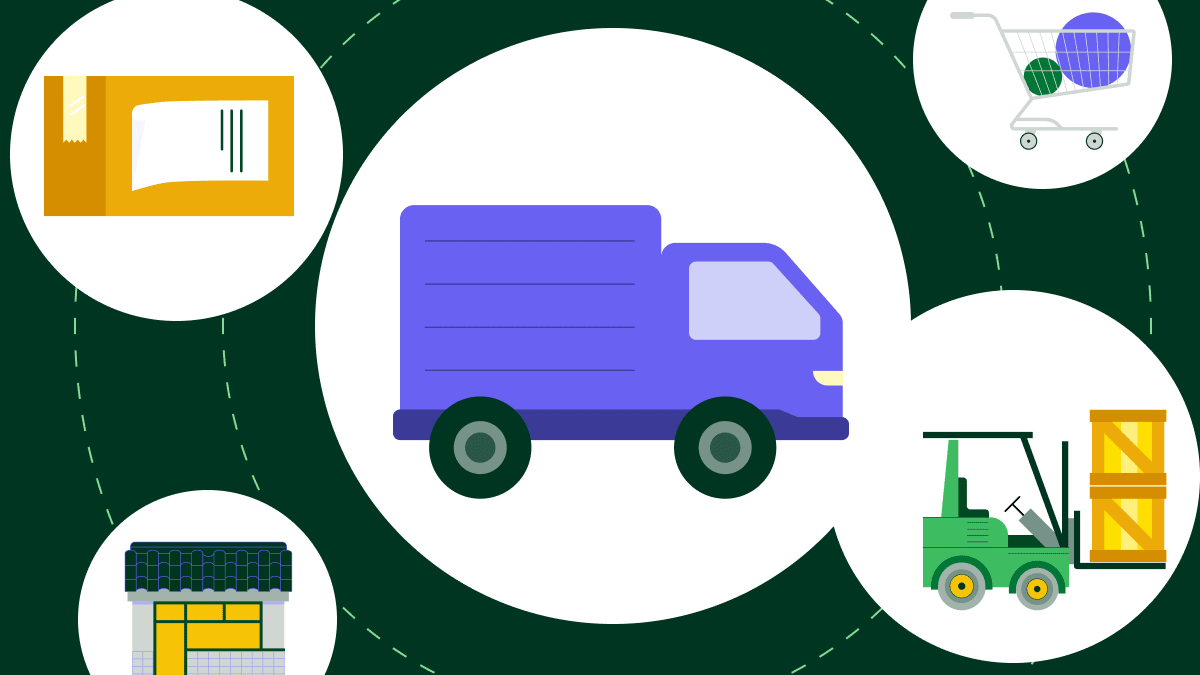With limited budgets, SMBs must squeeze as much value as possible from every marketing dollar to get noticed and encourage action.
A clear understanding of ATL and BTL marketing helps you decide whether to focus on broad brand awareness or targeted customer actions. As a result, you can spend your budget wisely and get the best possible return.
In this article, you’ll learn how to use ATL and BTL marketing effectively to maximize your budget and achieve stronger results. Discover the key differences between marketing types, see real examples and find the best approach for your business.
ATL, BTL and TTL marketing: what’s the difference?
ATL and BTL marketing use different channels and strategies to promote your business and nurture leads. TTL marketing is a blend of both. Understanding the differences is essential for allocating your budget effectively, choosing the right tactics for the best results.
Here’s a breakdown of how ATL, BTL and TTL marketing work and the differences that set them apart.
Sometimes known as traditional marketing, ATL builds brand awareness and shapes public perception on a large scale. It’s harder to measure directly, but effective for reaching a wide demographic quickly.
BTL is more personalized, often interactive and easier to track return on investment (ROI).
The key difference lies in audience targeting and measurability. ATL is broad and brand-focused, while BTL is narrow, targeted and more performance-driven.
Most modern campaigns combine both advertising strategies into an integrated marketing mix. This process is known as through the line marketing (TTL).
TTL marketing combines ATL and BTL strategies to create a unified, multi-channel approach. Blending broad brand awareness with measurable tactics helps businesses reach wide audiences while driving specific actions.
For example, QuickBooks launched a national TV campaign (ATL activity) to boost broad brand awareness and generate interest. This widespread exposure helped the audience become familiar with the brand’s message and identity.
The brand also runs retargeted social media ads offering personalized discounts (BTL activity). Because the audience recognizes the brand from the TV ads, they’re more likely to engage with the posts.
Here’s an example of one of these posts:
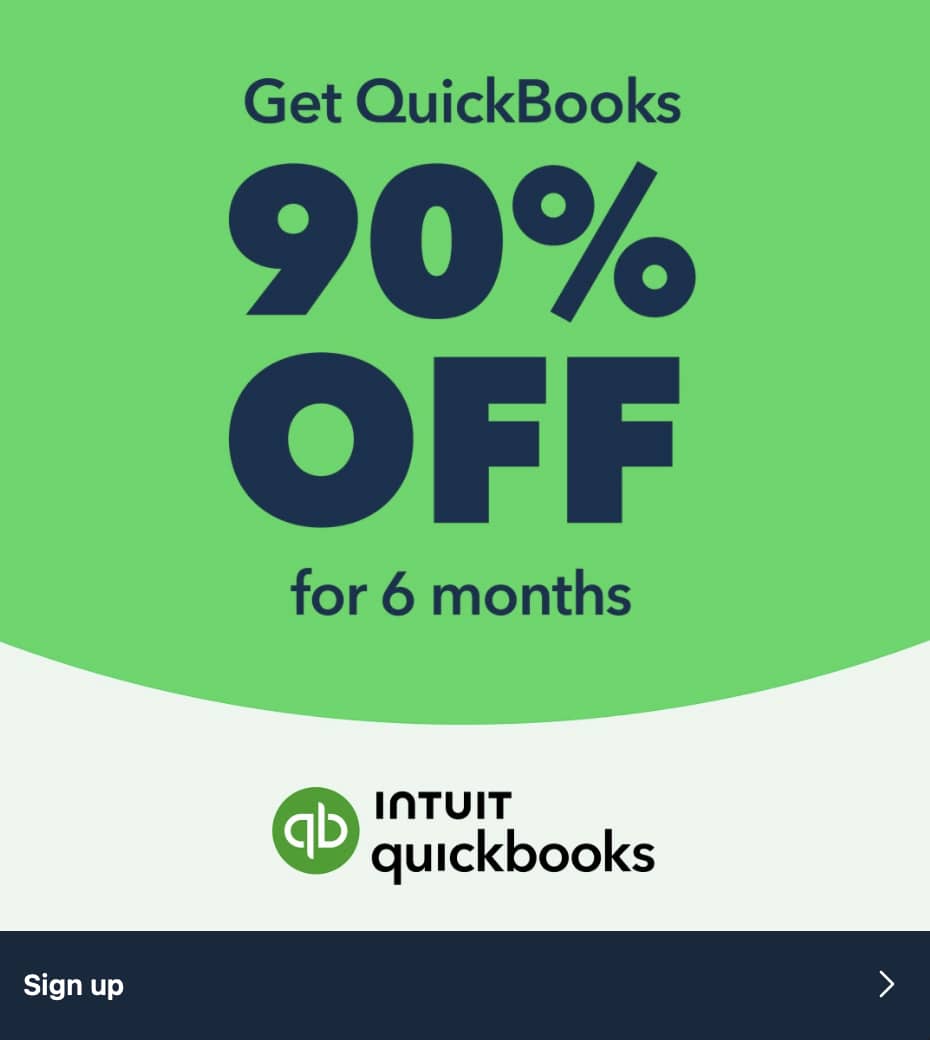
Familiarity increases the effectiveness of the social media campaigns, leading to higher engagement rates, website visits or conversions.
Here’s an overview of the different types of marketing:
Type of marketing | Definition |
ATL marketing | Uses traditional media channels like TV, radio and print media to build brand awareness at scale. |
BTL marketing | Targets specific groups through direct channels like search engine optimization (SEO), email and sponsorships for measurable impact. |
TTL marketing | Combines ATL and BTL strategies to increase brand awareness and launch targeted, measurable marketing activity. |
Examples of ATL, BTL and TTL marketing
Here are some real examples of ATL, BTL and TTL marketing to help you understand which type of marketing is right for your business.
ATL marketing: BarkBox
This social media campaign from pet subscription service BarkBox generates mass awareness through entertaining, shareable content. Instead of targeting specific individuals, the posts build brand recognition at scale.
The company commemorates National Squirrel Appreciation Day (January 21st) by pretending a squirrel has taken over its social media. The campaign uses memes, photos and videos, often in a way that playfully mocks BarkBox’s products or brand.
Here’s an example post:
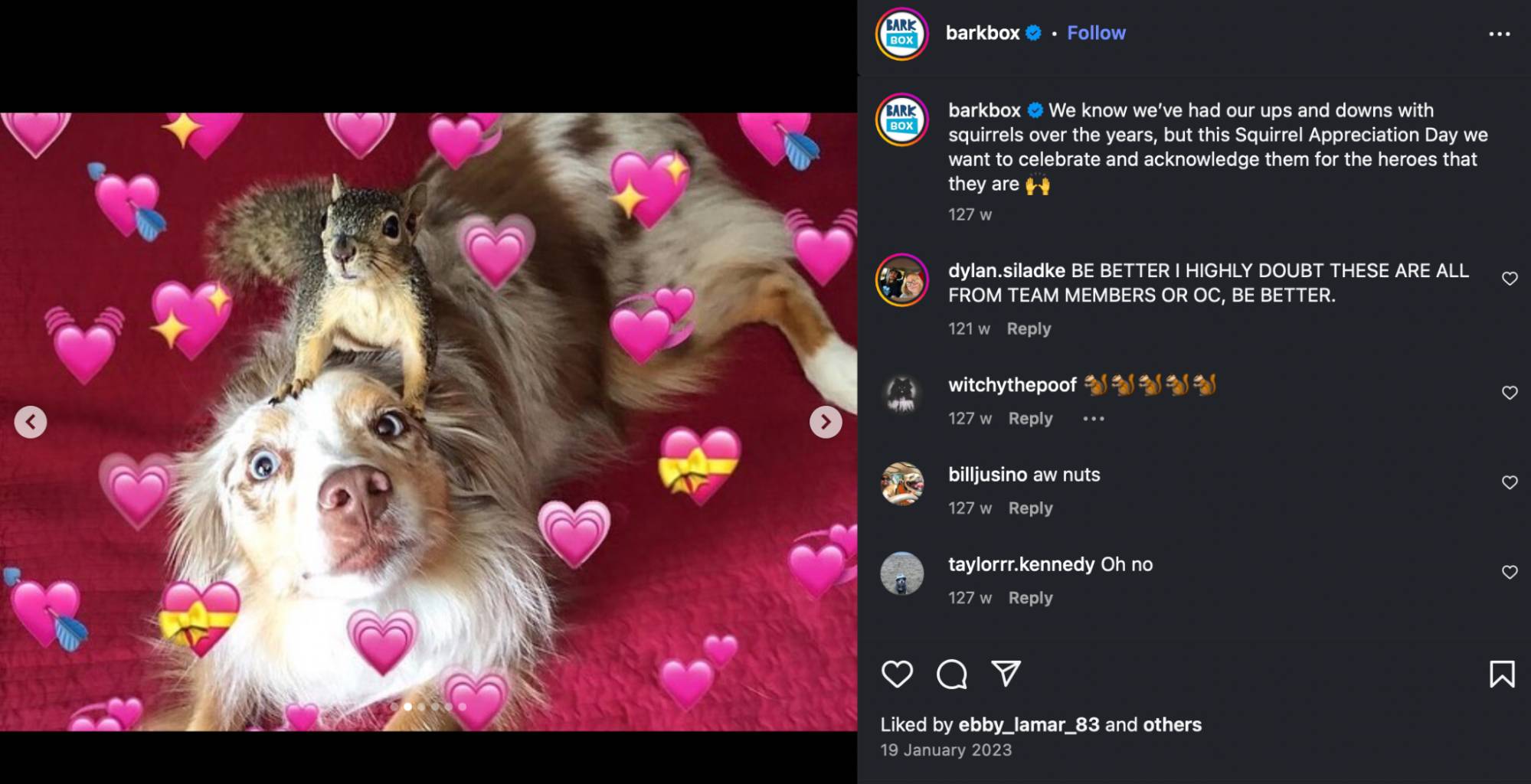
BarkBox also encouraged followers to interact with the squirrel takeover by commenting, sharing or using specific hashtags.
This campaign has successfully built the company’s brand reputation and increased social media engagement.
BTL marketing: Gaia GPS
Gaia GPS uses personalized emails with tailored discounts and product highlights to engage subscribers. The goal is direct engagement with specific users, driving conversions through targeted communication and measurable outcomes like click-throughs and purchases.
Here’s an example of one of Gaia’s emails:
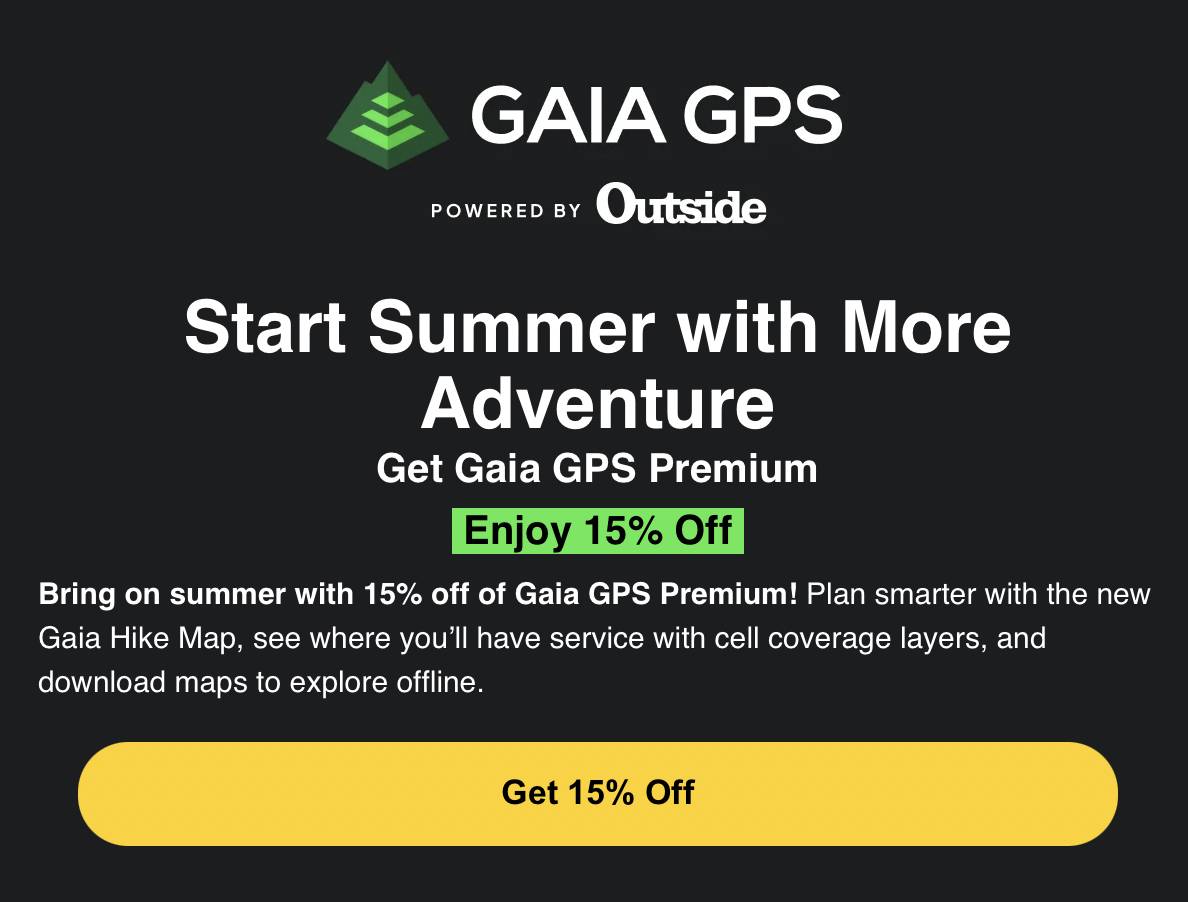
The email offers 15% off Gaia GPS Premium, a direct incentive to encourage subscribers to make a purchase.
Beyond the discount, the email highlights specific app features like the new Gaia Hike Map with steepness overlays and cell coverage layers:
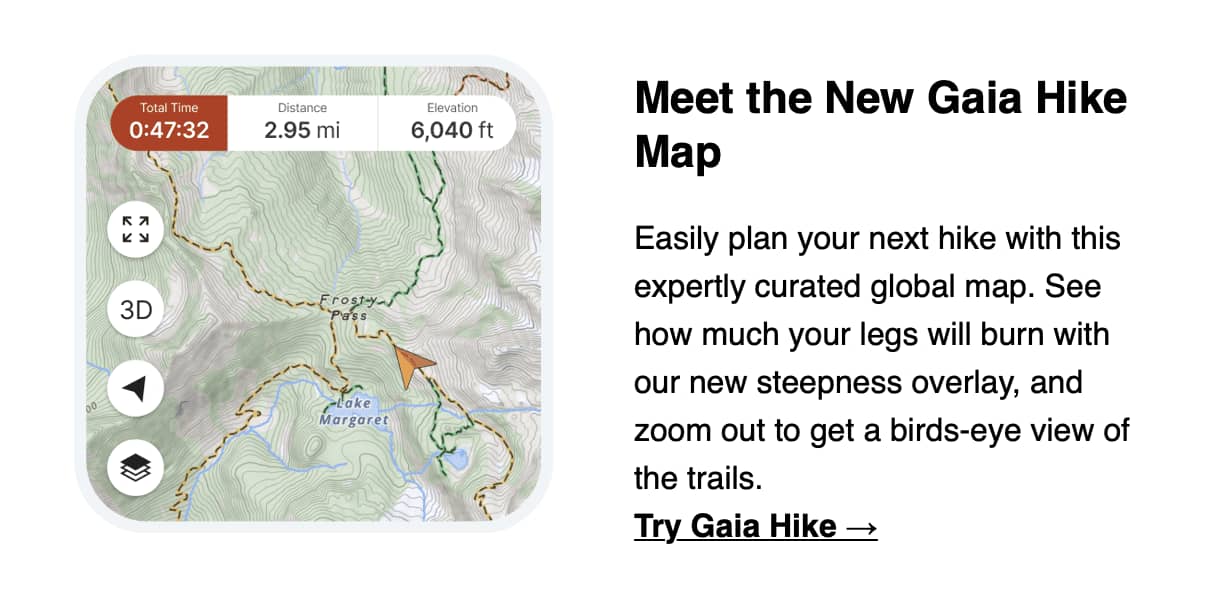
This information highlights the product’s value, nurturing potential buyers toward a sale and encouraging existing users to upgrade. Email delivery also allows the company to track performance through open rates, click-throughs and conversions.
TTL marketing: Prosci
Change management solutions provider Prosci uses ATL channels to reach wide audiences and BTL tactics to engage individual customers. This strategy boosts the company’s brand awareness, builds credibility and encourages more potential customers to reach out.
For ATL, Prosci uses social media like YouTube and LinkedIn to showcase its expertise and offer potential customers valuable advice. Here’s a selection of videos on the company’s YouTube channel:
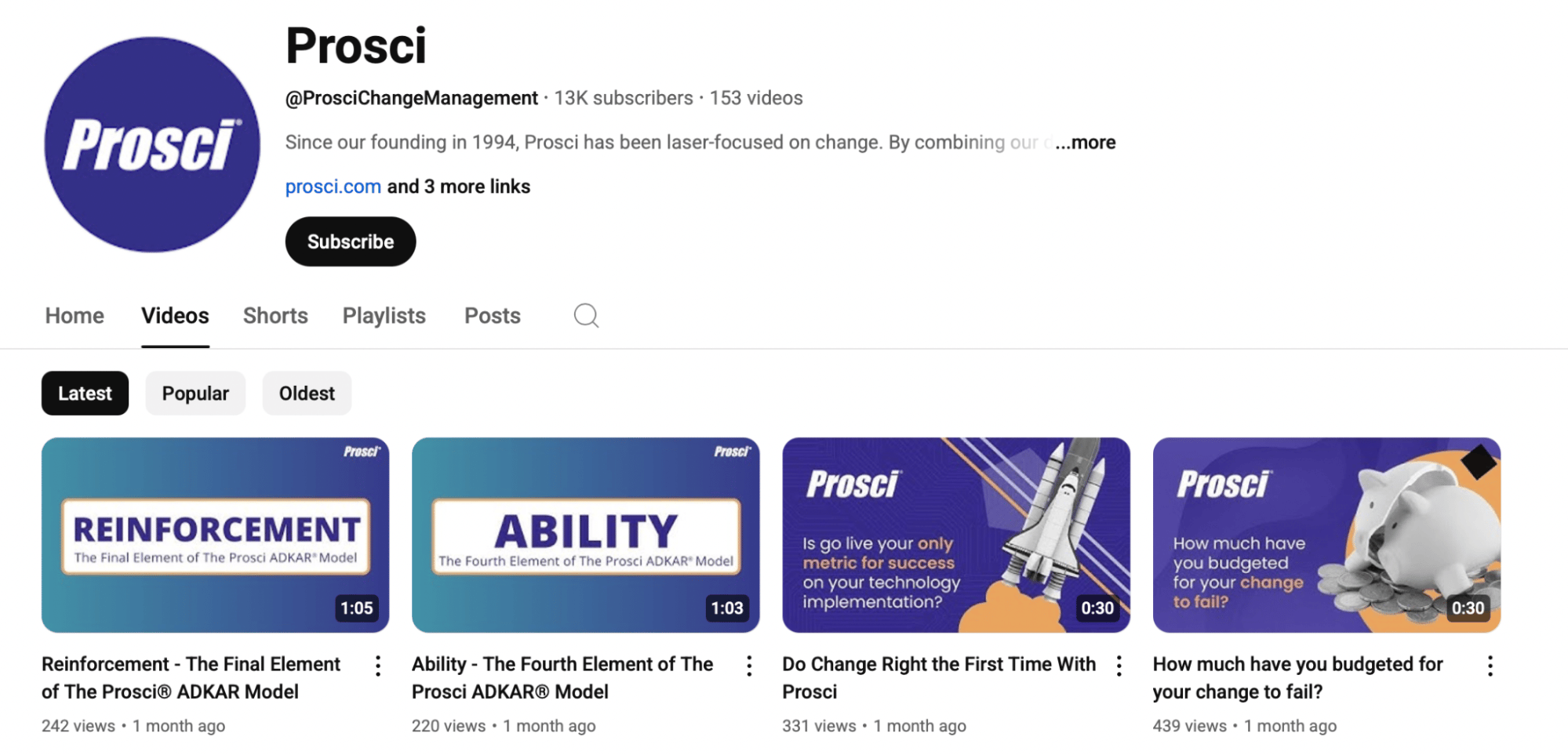
For BTL, the company sends personalized emails with change management advice, updates and messages to build rapport and boost engagement.
Here’s an example of a personalized email from Prosci:
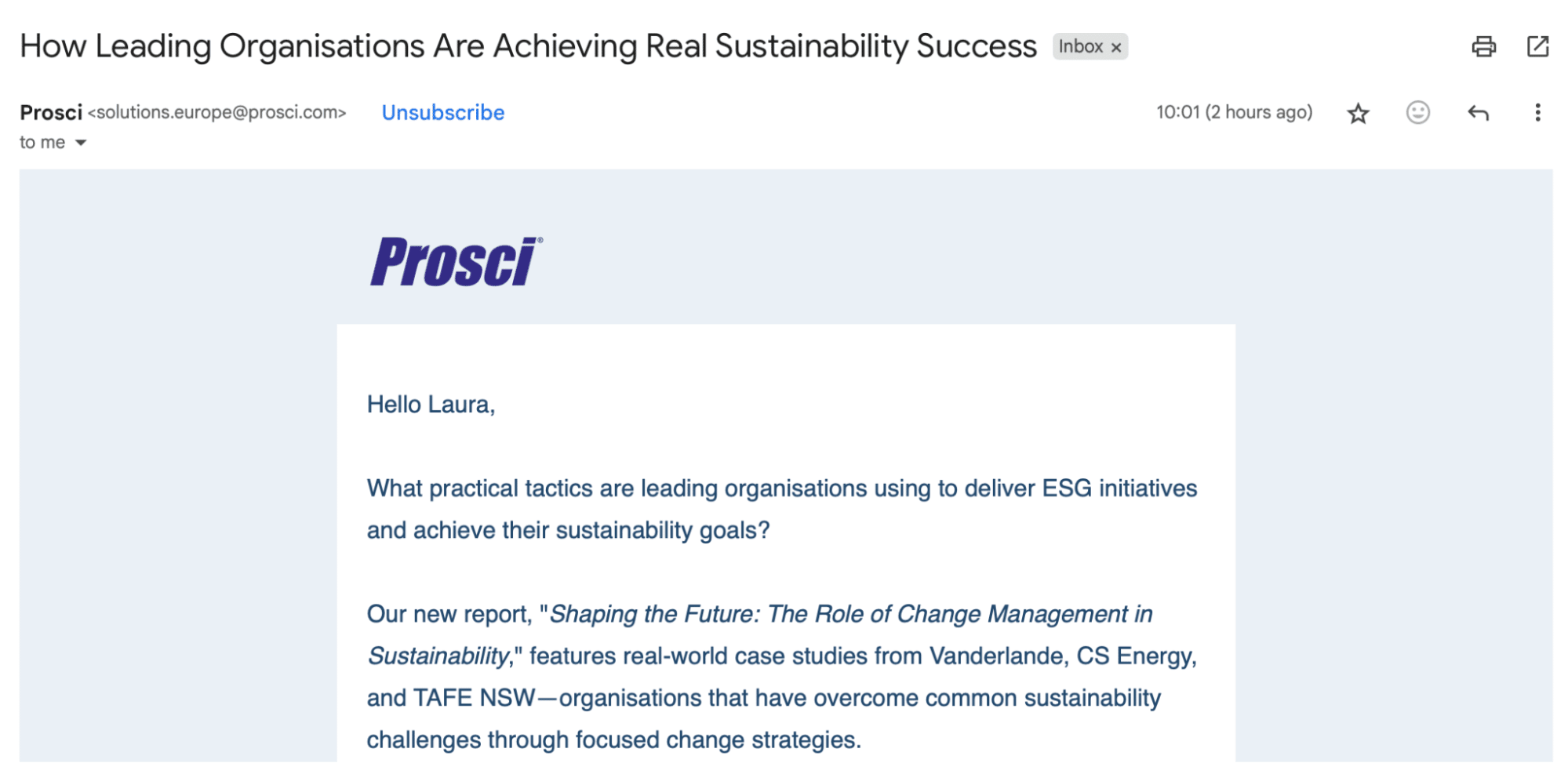
As a result of these efforts, the business is well established in its field. When customers trust a brand, they’re more likely to buy from it.
The pros and cons of ATL, BTL and TTL marketing
ATL, BTL and TTL marketing each have strengths and limitations. Understanding the pros and cons helps you choose the right strategy for your business goals, budget and audience.
Here are the key advantages and drawbacks.
ATL marketing
ATL marketing helps SMBs trying to stand out in a competitive market, building brand awareness on a large scale and getting their name in front of a broad audience.
Channels like Instagram Ads, YouTube campaigns and radio spots can boost recognition fast, especially when launching a new product or entering a new region.
However, ATL can be expensive.
Because of its broad approach, you can spend time and money reaching people who aren’t ready to buy or aren’t the right audience.
Pros |
|
Cons |
|
ATL advertising strategies are ideal for creating widespread visibility, but they work best when paired with BTL strategies to avoid wasted spending.
BTL marketing
BTL marketing strategies speak directly to the right audience in a personal, measurable way. For example, using email campaigns, local events or targeted discounts to drive action.
BTL advertising also makes it easy to track performance. For instance, businesses can see who opens emails, clicks links and makes purchases, making it easier to measure performance and improve future marketing campaigns.
One downside of BTL campaigns is their limited reach, especially for SMBs with a small contact list. BTL might not be enough to boost brand recognition if you haven’t built up an audience.
Pros |
|
Cons |
|
BTL marketing works well for driving action and building relationships. However, it often needs a solid audience base to be worthwhile (if using it as your only source of digital marketing).
TTL marketing
TTL marketing is ideal for businesses growing their audience while nurturing leads and driving action.
However, TTL requires more planning and coordination than ATL or BTL.
TTL involves managing both broad awareness campaigns and targeted follow-ups, which can become a real challenge for SMBs with lean teams or tight budgets.
You might be running a brand awareness campaign on LinkedIn while trying to segment your email list and nurture leads with personalized content. Without an effective marketing team or the right automation tools, it’s easy to get overwhelmed.
Messages misalign, leads fall through the cracks and campaigns underperform because the execution is spread too thin.
Pros |
|
Cons |
|
When done well, TTL marketing offers strong results. SMBs need the right tools and planning to manage reach and relevance without overstretching sales teams.
5 essential tips to master ATL, BTL and TTL marketing
ATL, BTL and TTL marketing each play a different role in business success. Knowing how to use them effectively helps boost brand awareness, reach the right target audience and drive real results.
Here are five essential tips to help you combine these tactics for the best results.
1. Identify the right type of marketing for your SMB
Using the right type of marketing helps you focus your time and budget where it has the biggest impact. As a result, you optimize your resources and increase the chances of getting more sales.
If your goal is to build brand awareness quickly across a wide audience, ATL marketing activities like TV or outdoor advertising (billboards) will reach many people at once.
However, BTL activities like email campaigns are a better option if you want to target a specific audience directly and encourage immediate purchases.
Here are some more examples of when to use each type of marketing:
What it is | When to use it |
ATL marketing | Use ATL marketing if your business needs broad exposure to build brand awareness. Example: A small eco-friendly clothing brand expands into a new market. It runs Instagram and radio ads to reach a wide audience quickly and introduce its values, style and story to potential customers. |
BTL marketing | Choose BTL marketing when your priority is driving action from a defined audience. Example: A growing IT services firm promotes a new cybersecurity audit package to existing leads by sending personalized email offers. |
TTL marketing | Go with TTL marketing when you want to guide customers from awareness to conversion with both large-scale and targeted marketing efforts. Example: A SaaS company launches a new project management tool. The business runs YouTube ads (ATL) to generate broad awareness among startups and freelancers. At the same time, it retargets users who visited the website with personalized emails (BTL), offering a free 14-day trial and onboarding support. |
Ensure that your marketing approach aligns with your business goals and that you can support meaningful, measurable progress toward those objectives.
Re-evaluate your tactics regularly to ensure they align with your goals. As your brand matures or your offer changes, you may shift from ATL to BTL or layer on TTL to maximize returns.
2. Align different approaches to your customer journey
Maximize marketing impact by using the right type of marketing at each stage of your customer’s journey (awareness, consideration, decision). Aligning your activity with the customer experience guides prospects naturally toward the point-of-sale and improves conversion rates.
Here’s how to apply ATL, BTL and TTL activities to different stages of the buying journey:
Use ATL to spark awareness at the top of the funnel. For example, using tactics like digital ads, radio mentions or sponsored posts that introduce your brand to a wide, cold audience.
Use BTL in the consideration and decision-making stage. Target people already aware of your brand through methods like email sequences, retargeting ads or exclusive offers to push them toward a purchase.
Leverage TTL to connect top and bottom funnel action. For instance, run an Instagram ad that drives clicks to a landing page with an offer, followed by an automated email series, connecting all stages in a cohesive campaign.
This targeted approach helps you craft relevant and timely messaging, increasing the chances that prospects will move from awareness to action.
Download our customer journey map template
A CRM like Pipedrive is also a powerful tool in this process.
The software helps you track leads throughout the customer journey and tailor your marketing efforts accordingly. Create custom fields to track how leads move through the buying process.
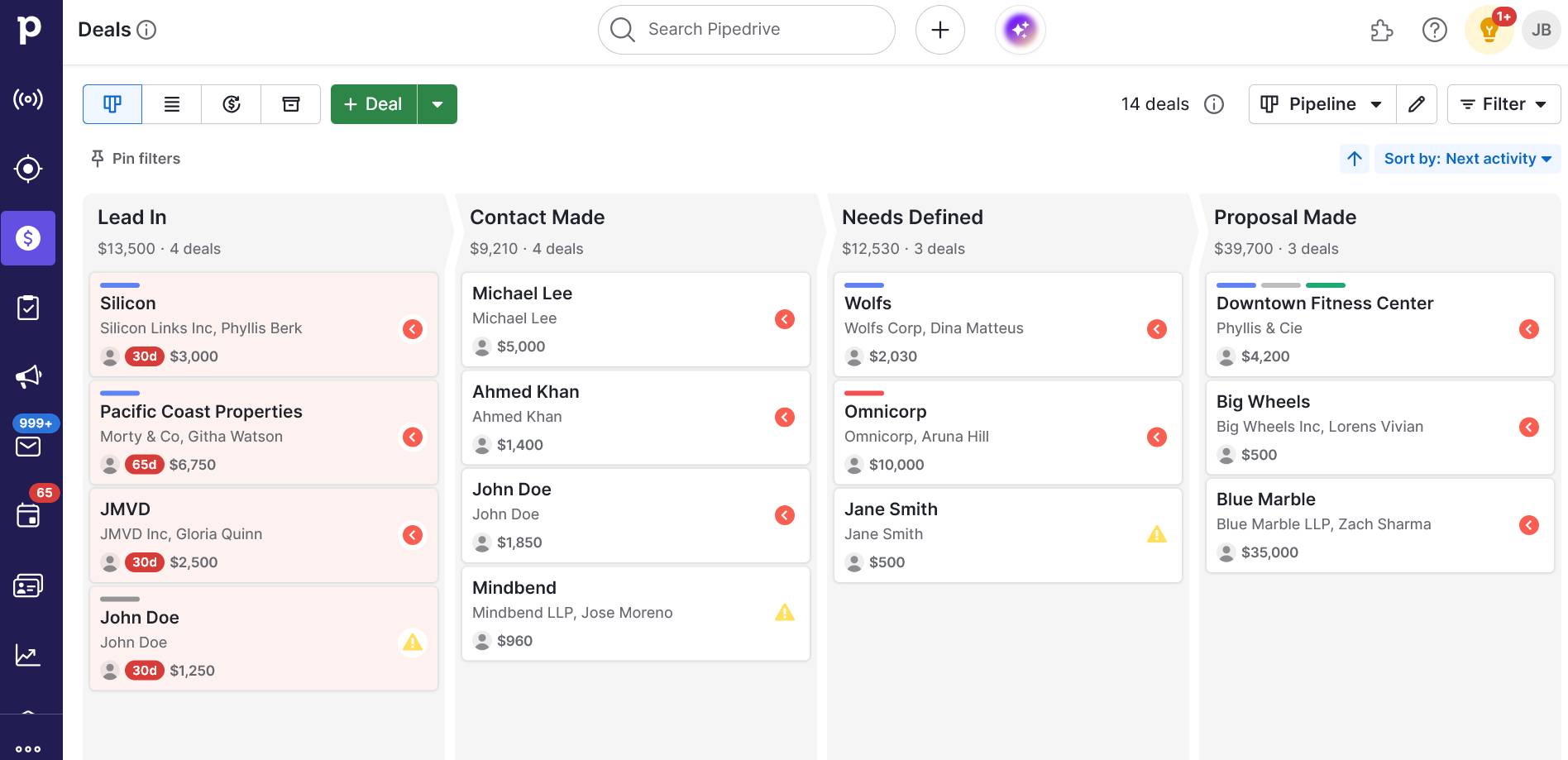
Pipedrive also lets you automate marketing communications and follow-ups, improving your engagement with prospects at every stage of the sales pipeline.
Learn more in our blog post about creating automated campaigns with Pipedrive.
Note: Connect data across platforms to get full oversight of TTL performance and guide leads smoothly from awareness to conversion. For example, integrate tools like Google Analytics with your CRM to track the entire customer journey across ads, landing pages and emails.
3. Use data to optimize and personalize the customer experience
Data allows you to personalize your marketing, tailoring your messages and campaigns based on customer behavior and preferences. This approach drives higher engagement, stronger connections and better ROI – especially in BTL and TTL strategies where relevance is key.
Consider email marketing as an example. By tracking email metrics (like open rates and click behavior), you can segment subscribers to send personalized emails. For example, you might send onboarding tips to new users while offering advanced tutorials to long-term customers.
Segmenting keeps content relevant and valuable, increasing the chances they’ll engage with your emails and convert into paying customers.
Here are some ways to use real data to personalize your marketing activity:
Track key metrics like open rates, click-through rates (CTR) and conversion and bounce rates to spot what’s working and needs improvement. For example, a high open rate but low CTR on a free trial email might signal strong interest but weak messaging.
Use audience behavior to segment and personalize your content. For example, segment your email list by purchase history or engagement to send tailored offers that boost engagement and conversions.
Apply A/B testing regularly to refine your marketing activity’s messaging, visuals and CTAs. For instance, test two subject lines to see which gets more opens and engagement.
Consolidating your data in one place makes this level of personalization manageable for smaller teams. For example, centralizing all customer and campaign data in a CRM system like Pipedrive.
The system manages leads, sales activities and marketing interactions in a single location. This central view makes it easier to track campaign performance and to use these insights to personalize the user experience.
For example, you can see which emails they open and which sales rep they’ve spoken to. As a result, it’s easier to tailor follow-up emails and nurture leads through the buying journey.
Here’s what tracked emails look like in Pipedrive:
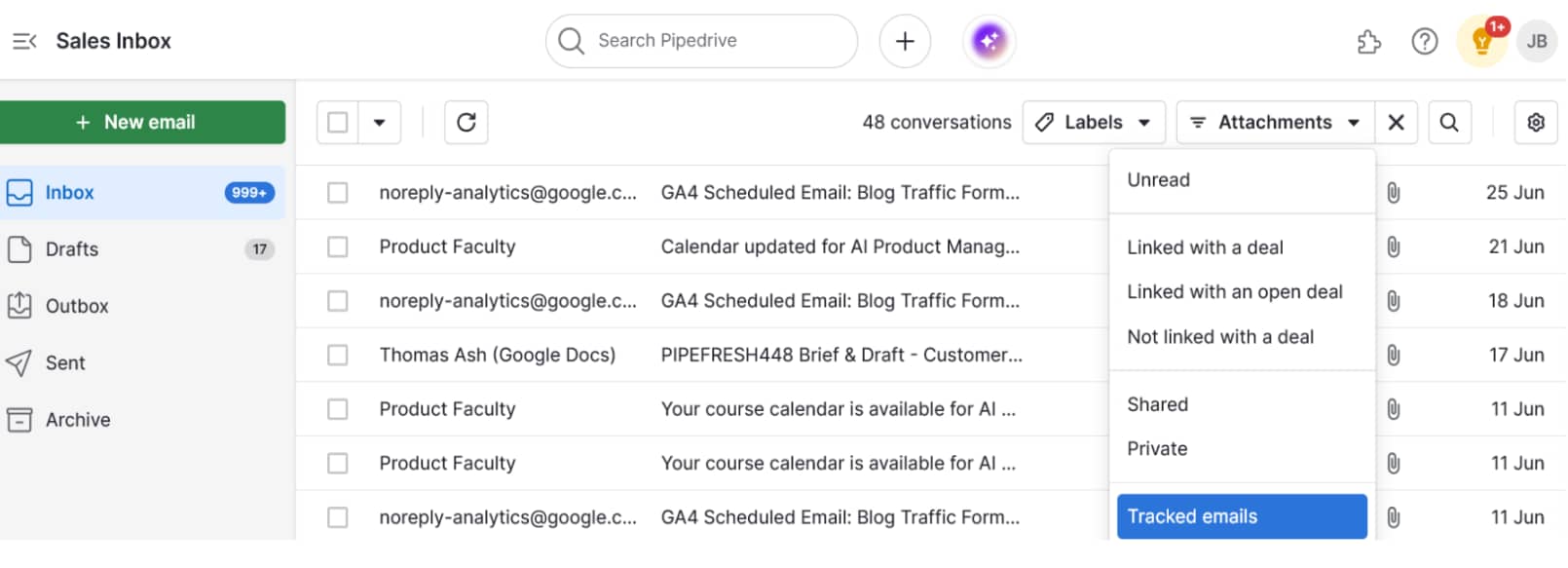
4. Optimize budget allocation
Strategic budget allocation is critical for SMBs with limited resources. When done well, it helps you maximize ROI, avoid waste and focus resources on the tactics that drive results.
Say that your goal is to generate leads for a new product. You might allocate the budget to BTL tactics like webinars and targeted email campaigns (which are cost-effective and easier to measure) rather than investing in broad ATL ads that are harder to track and optimize.
Here are some ways to optimize budgets with ATL, BTL and TTL marketing:
Set SMART goals. Start by setting specific, measurable goals for each campaign and align your budget accordingly. For example, if lead generation is the focus, create a goal like, “Generate 100 qualified leads from a webinar campaign within 30 days, with a cost per lead under $50”. This goal sets clear performance benchmarks and cost limits, making budgeting easier.
Test lower-cost channels. Try marketing activities on lower-cost channels first to quickly identify what works without overspending. Tactics like referral programs, email marketing or influencer partnerships offer fast feedback and minimal risk, which is ideal for lean teams.
Continuously assess ROI. Monitor financial performance across all channels and adjust your spending based on what’s working. Use simple dashboards to track performance and shift the budget toward high-performing campaigns.
Using a platform with built-in insights and dashboards makes tracking performance and adjusting budgets much simpler.
Pipedrive, for example, centralizes your marketing and sales data in real time. You can create custom dashboards that help you spot trends, measure ROI and quickly reallocate spending to the most effective campaigns.
Here’s an example sales dashboard in Pipedrive:
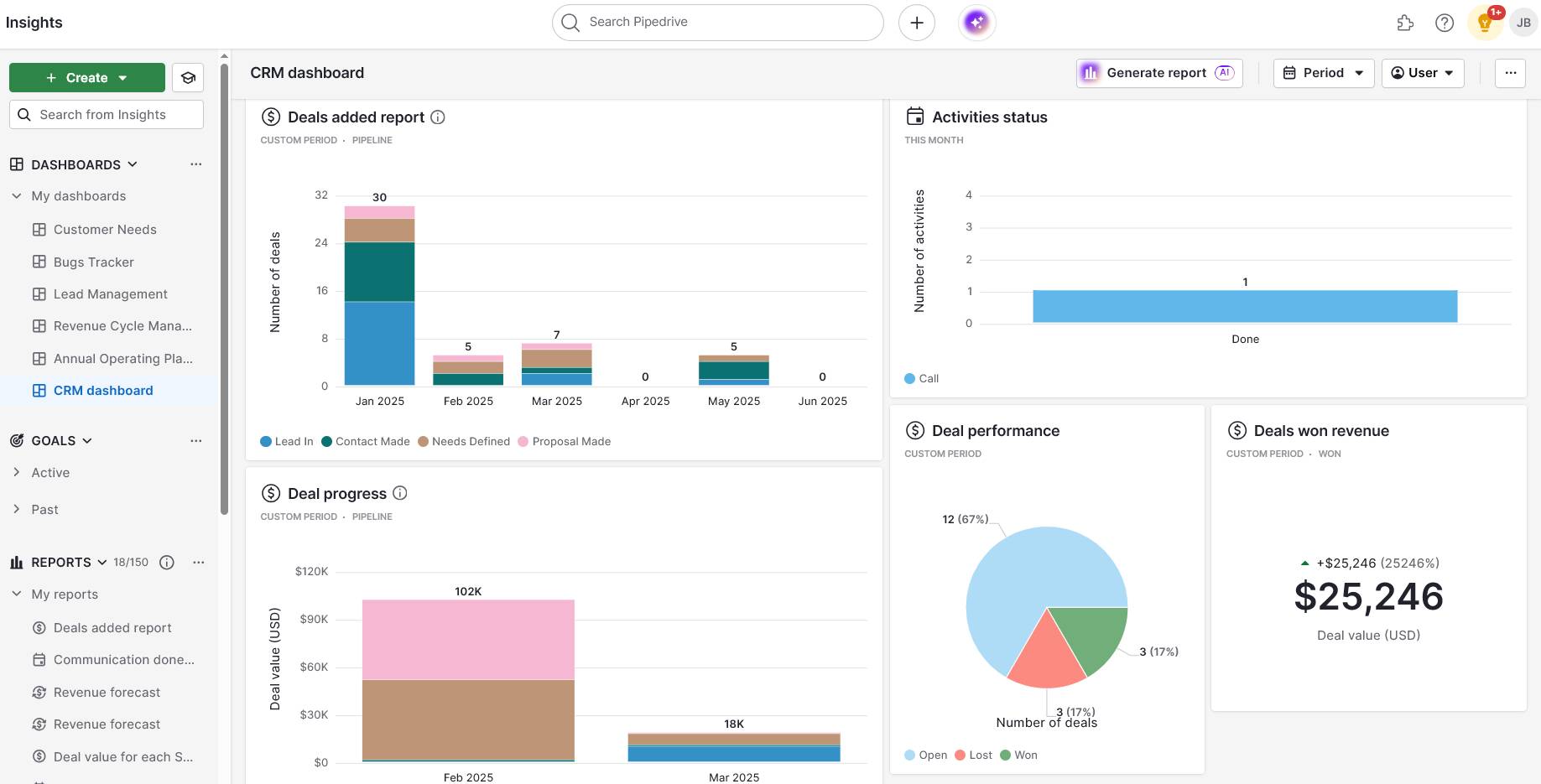
5. Reuse content across channels
Maximize ROI by reusing content across multiple channels. This process saves time, keeps your messaging consistent and allows you to scale even with a smaller/growing business.
Think about a customer success story as an example. You can turn this story into:
A detailed blog post (ATL)
A series of social media quotes and graphics (ATL/BTL)
A personalized email case study (BTL/TTL)
Take a look at AI-powered restaurant management system Nory as an example.
The company uses case study content across multiple platforms. Here’s an original case study video on the company website:
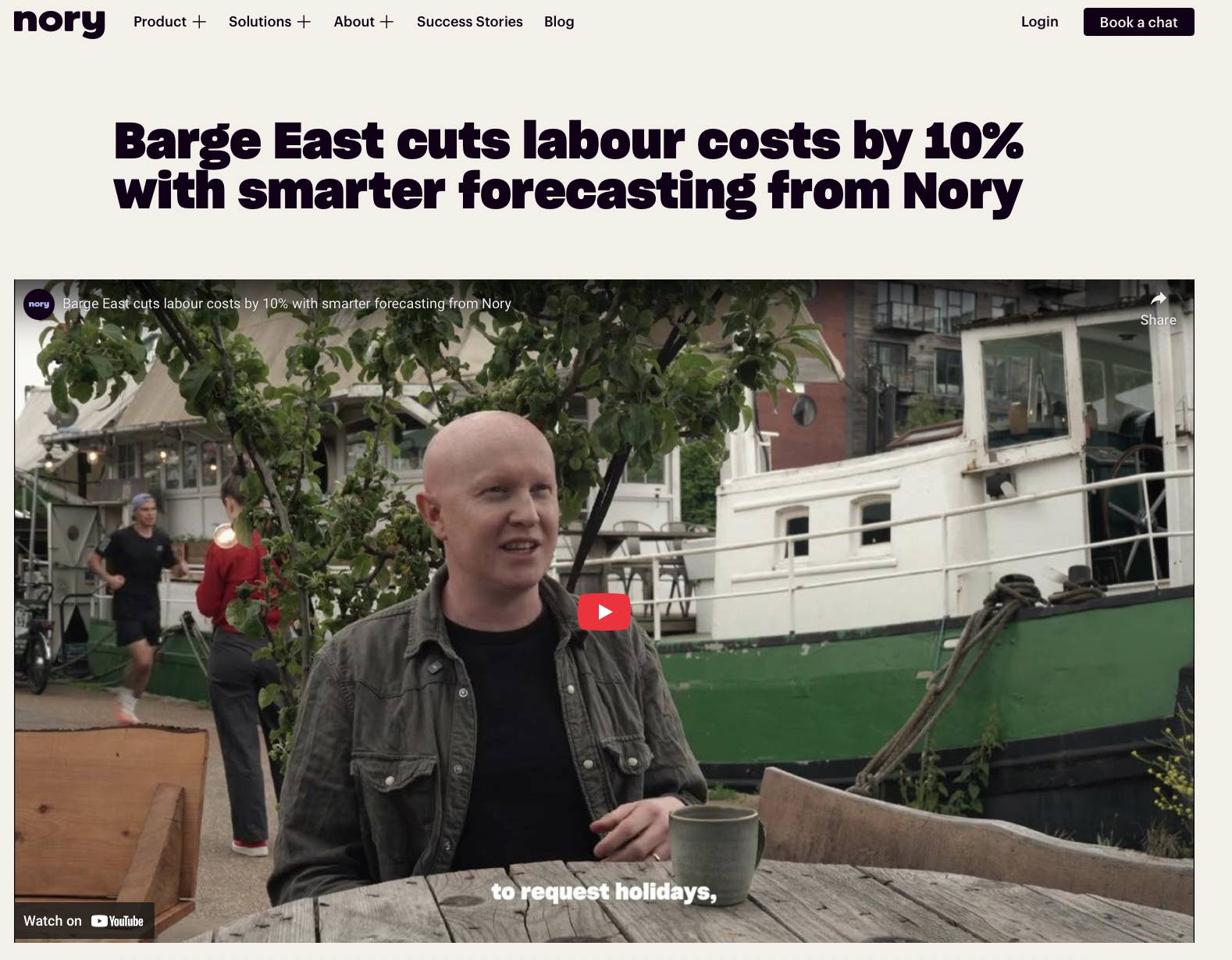
Here’s the same video repurposed for LinkedIn:

Repurposing this video reinforces the company’s brand message without creating new content from scratch. For SMBs with limited time and resources, this approach boosts efficiency and ensures consistent, impactful communication across channels.
Here are some ways to repurpose content for different types of marketing:
Turn one piece of content into multiple formats. Adapting existing content means you don’t have to create new content from scratch when targeting audience segments across channels. For example, you could turn a blog post into a LinkedIn carousel (ATL) and an email summary (BTL) to nurture leads.
Create a content “core” and build around it. Develop anchor pieces (like case studies or videos) and adapt them into different types of content, like short-form clips, quotes, reels or infographics. Use these content pieces to target your ideal audience at different stages of the buying journey.
Plan your campaigns with repurposing in mind. Use templates and modular content (like FAQs or testimonials) that are easy to plug into multiple formats. Preparing for multiple uses helps your content last longer and offers more value from each piece.
Repurposing content strategically helps maintain a steady, engaging presence across channels without overstretching your team or budget.
Final thoughts
ATL, BTL and TTL marketing each play a key role in helping your business grow, from building awareness to driving action.
Choose tactics that align with your goals and customer journey to get the best results from ATL BTL marketing. Then, track and adjust your efforts using real-time customer data to improve the user experience and boost sales.
A sales CRM like Pipedrive simplifies this process by helping you plan campaigns, track performance and automate communications in one place.
Sign up for a free 14-day trial to execute smarter marketing without spreading your team too thin.





